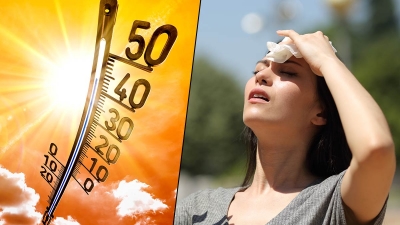
Heatwave is a period of abnormally high surface temperatures relative to what’s actually expected over a region at a particular time of the year. Countries have adopted their own standards to declare a heatwave. Heatwaves occur in summer when the high pressure across an area moves slowly, thereby persisting over it for a few days or even weeks. Heatwaves have been observed globally since the 1950s, and have been associated with climate change. It can lead to heat-related stress such as dehydration, exhaustion and heatstroke.
Dangerous Heat
For some, a heat wave might sound like an excuse to run around with a hose or into some sprinklers. In reality, though, heat waves are no laughing matter. They are serious weather phenomena that can be quite dangerous.
How Do Heat Waves Form?
Heat waves are generally the result of trapped air. During the 2012 heat wave, air was trapped above much of North America for a long period of time. As opposed to cycling around the globe, it simply stayed put and warmed like the air inside an oven.
The culprit? A high-pressure system from Mexico. Between June 20th and June 23rd, this system migrated north. It grew in size, and it parked itself over the Great Plains of the United States.
High-pressure systems force air downward. This force prevents air near the ground from rising. The sinking air acts like a cap. It traps warm ground air in place. Without rising air, there was no rain, and nothing to prevent the hot air from getting hotter.
But that wasn’t all. A weather pattern that normally pulls air toward the east was also weaker at the time. That meant that there was little that could be done to push this high-pressure cap out of the way.
Credit : Sci jinks
Picture Credit : Google




